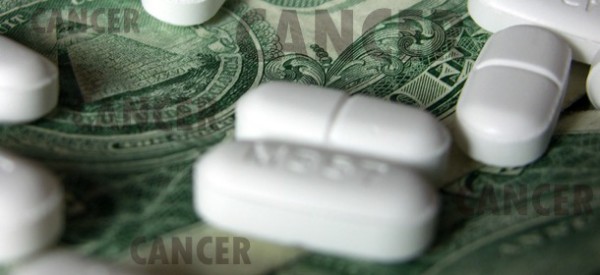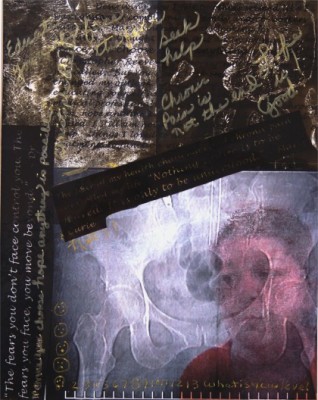Diseases
Method by Which Aluminum May Cause Breast Cancer
 The devastation of breast cancer is a growing menace, with more cases each succeeding decade. Researchers associated with the Keale Conference on the Biological Effects of Aluminum are producing compelling research showing that aluminum may be a cause. This study supports an aluminum carcinogenic function in breast cancer, and they offer a method of how the toxic metal may do it.
The devastation of breast cancer is a growing menace, with more cases each succeeding decade. Researchers associated with the Keale Conference on the Biological Effects of Aluminum are producing compelling research showing that aluminum may be a cause. This study supports an aluminum carcinogenic function in breast cancer, and they offer a method of how the toxic metal may do it.
by Heidi Stevenson
Breast cancer is one of women’s greatest fears, and the numbers have been growing for decades. Some serious, and generally underfunded, scientists have zeroed in on aluminum as a possible cause and almost certain accelerator of it, and they’ve identified a primary source as antiperspirants. New research has now found a likely sequence of events triggered by aluminum that may be the cause of so much breast cancer.
Dr. Ferdinando Mannello, of the Department of Biomolecular Sciences, Section of Clinical Biochemistry and Cell Biology, at the University ‘Carlo Bo’ in Italy, is the lead author of this study. It documents a highly significant association and linear relationship between aluminum presence and breast cancer:
- Protein oxidative carbonyls are associated with cancer. They found a significant relationship between aluminum concentrations and carbonyls.
- Proinflammatory cytokines IL-1ß, IL-6, IL-12 p70, and TNF-a are associated with cancer. They found significant and linear relationships between these cytokines with breast cancer.
- Chemokines are a type of small cytokine associated with cancer metastasis. They found a strong linear association between cancer and chemokines called IL-8, MIP-1a & MCP-1.
The researchers analyzed nipple aspirant fluids (NAFs) of women with and without breast cancer. 19 of the samples were from cancerous breasts and 16 from noncancerous breasts. The NAF samples were analyzed for each of the substances just described. The authors not only described their results, they included clear graphs to show each of their NAF analysis results and some of the statistical regression results, which are reproduced here.
How Aluminum May Cause Cancer
After presenting their latest research, the authors discussed how it applies to the full picture of breast cancer. The scientific bar for outright proving whether aluminum causes it is extremely high, and they don’t make that claim. They do, though, suggest a strong association and offer a means by which breast metabolism is changed so that cancer could be the result.
By far, the largest source of aluminum to the breasts is antiperspirants. The active ingredient in all of them is aluminum. It’s absorbed through the skin—epithelial cells, myoepithelial cells, and the basement membrane—and into what they refer to as the breast microenvironment. The authors state:
Although our results do not support an“absolute”cause-effect relationship between BC [breast cancer] and aluminium, we have hypothesized in Fig. 7 that aluminium salts (accumulated in breast cells/tissues/fluids mainly by underarm cosmetics/antiperspirants) may be able to alter within the breast cancer microenvironment the expression of
iron-binding proteins (like L-chain ferritin and transferrin).
It’s known that aluminum interferes with the metabolism of ferritin and transferrin, as discussed in Do Antiperspirants Cause Breast Cancer?, which reviews research by Dr. Phillippa Darbre, another Keale Conference on the Biological Effects of Aluminum researcher, and Dr. Mannello, of this paper. Therefore, the suggested chain of events outlined here is entirely reasonable. The process that Dr. Mannello and his fellow researchers suggest is:
- Aluminum interferes with the metabolism of iron (Fe+3), reducing it to Fe+2. (The numbers, +3 and +2, refer to positive electrical charges of the iron ion.) This would be done by the aluminum super-oxide, AlO2+2.
- The altered iron metabolism and the aluminum super-oxide fuel a Fenton reaction, in which free radicals (molecules with a negative charge) produce damage. In particular, the authors refer to previous research that documents the ability of aluminum salts to cause breaks in double-strand DNA, which they state predisposes “human breast cell lines to proliferative and carcinogenic stresses”.
- Oxidative damage and the alterations in ferritin and transferrin metabolism result in an increase of inflammatory cytokines and chemokines, such as those investigated in this study.
The authors documented that IL-6, which they documented is increased in the presence of aluminum, has recently been shown to be a likely factor in the development of beast cancer.
In conclusion, the authors state that, whether a cause-and-effect relationship between aluminum and breast cancer exists:
… the evidence for the presence of aluminium in the breast is building and further investigation is warranted using both in vitro and in vivo models in order to discern
the possible link among aluminium intake by antiperspirants, tissue accumulation and alterations of crucial biomolecular pathways involved in cancer initiation/progression.
From my point of view, though, the question isn’t so much whether we have absolute proof that aluminum causes cancer or aggravates existing cancer. The solid scientific evidence now in existence documenting a strong association between aluminum and breast cancer is quite clear. Therefore, the use of aluminum needs to be strongly modified. Its use in products that don’t require it should be eliminated. Products that are not necessary and require aluminum, such as antiperspirants, should be eliminated.
It seems to me that we’re well past the precautionary principle on this issue. The evidence is simply too strong to ignore. There cannot possibly be a justification for continuing the use of a toxic substance like aluminum in most everyday products. Humans have existed through most of their time on earth without the benefit of antiperspirants. Clearly, they are not necessary and, as far as I know, no one has ever suggested that they benefit health.
The time to bring the travesty of continued production of this product known to be toxic is now, not later when every detail of aluminum’s toxic effects are known—because that day will never arrive.
Source:
- Aluminium, carbonyls and cytokines in human nipple aspirate fluids: Possible relationship between inflammation, oxidative stress and breast cancer microenvironment; Journal of Inorganic Biochemistry; F. Mannello, D. Ligi, M. Canale; doi: 10.1016/j.jinorgbio.2013.07.003.
Tagged Aluminium, aluminum antiperspirant, aluminum antiperspirant breast cancer, aluminum breast cancer, aluminum breast cancer cause, aluminum breast cancer science, aluminum cancer, aluminum chemokines, aluminum cytokines, aluminum science, carbonyls and cytokines in human nipple aspirate fluids: Possible relationship between inflammation, cause and effect aluminum cancer, journal of inorganic biochemistry, keale conference on biological effects of aluminum, mannello breast cancer, oxidative stress and breast cancer microenvironment, precautionary principle aluminum, science













